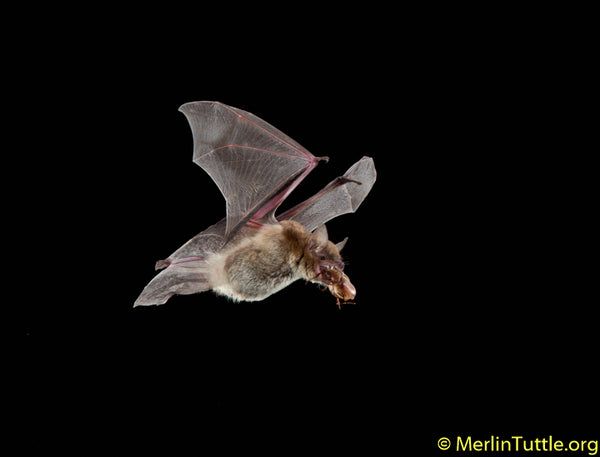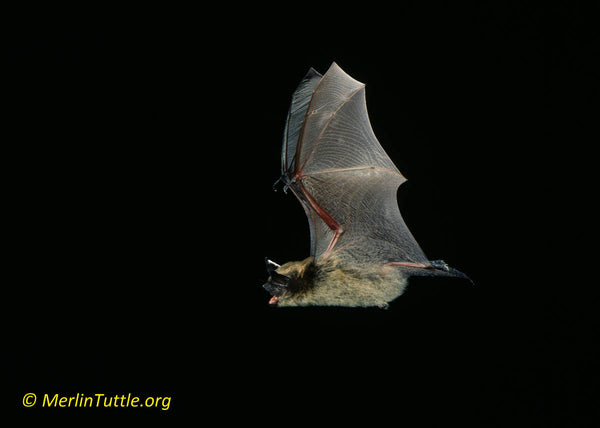Threats of Pesticide Addiction — Following World War II, many farmers suddenly turned to DDT, the first modern pesticide. With great fanfare, it was hailed as a miracle discovery, protector of crops and eradicator of malaria. But such hopes were soon dashed.1, 2 A nasty surprise awaited. Our new chemical friends didn’t discriminate. They attacked all living things, including us. Furthermore, they often aided our worst enemies! Prior to the discovery of modern pesticides, harvests were steadily improving. Then they took a nose dive. Over the next 50 years, crop losses nearly doubled, and farmers were forced to use more than 10 times as many pesticides just to prevent even worse losses. In the U.S. alone, we now use a billion pounds (500,000,000 kilos) of pesticides annually, including more than 600 types.1 A bit late, we’re discovering the danger.
when mosquito foggers passed. Deadly results
went undetected till decades later.
Planning a Better Future — The good news is that it’s not too late to begin minimizing our addiction to pesticides. Numerous examples demonstrate that pesticide use could be reduced by at least 50% without reduction of crop yields or standards.3In fact, Sweden has reduced pesticide use by 68%, without reduction of either, and has simultaneously reduced public pesticide poisonings by 77%. A similar goal has been recommended for the U.S.1
- When possible, eat organic. It’s far less costly than getting cancer or dementia and more effective than legislation in redirecting agricultural use away from toxic pesticides.
- For roaches and ants indoors, treat safely with nontoxic remedies like Borax powder.
- Encourage native vegetation and habitats in yards and farm fencerows.
- Rotate crops.
- Put up bat and bird houses.
- Never permit aerial spraying or fogging for mosquitoes.
- Drain clogged rain gutters, flower pots and other temporary sources of standing water. In permanent ponds, introduce mosquito-eating fish. Understand that attempts to eliminate all mosquitoes are impractical and likely counterproductive in the long run.
- Whenever possible, support small, local growers. Small, family-owned farms are being lost at alarming rates, taken over by industrial giants who too often care little for the environment. Chemical-dominated mass agriculture is unsustainable.

This cave myotis (Myotis velifer) has caught a June beetle, a costly crop and yard pest.
Large, cave-dwelling colonies are invaluable but highly vulnerable to human disturbance.

An Egyptian slit-faced bat (Nycteris thebaica) is one of several South African bat species that preys heavily on green stink bugs, costly pests of macadamia nut orchards. Macadamia farmers surrounded by natural, bat-friendly vegetation report few pests.

eating a corn earworm moth in Texas.

consume 100 tons or more of insects, mostly crop pest nightly.

(Chaerephon plicatus) from Khao Chong Phran Cave in Thailand.

The artificially enlarged entrance to Wandotte Cave, a tour cave in Indiana exemplifies one of several great North American bat caves of the past that could easily be restored to dramatically increase numbers of endangered Indiana myotis (Myotis sodalis). The lowered floor allows leakage of cold air needed to aid the bats’ hibernation.

1,000 mosquito-sized insects in a single hour.
The University of Florida boasts the world’s largest occupied bat houses, located in a field across from Lake Alice on Museum Road. Combined, the structures house more than 300,000 bats. Streaming videos of the colony may be viewed on the Florida Museum of Natural History website, www.flmnh.ufl.edu/bats.


Highly successful bat houses in Pennsylvania.

A black woolly bat (Kerivoula furva) capturing an oriental leafworm moth in Taiwan.
This is one of Australasia’s most costly crop pests.
It attacks a wide variety of fruit and vegetable crops.
There is now a huge body of evidence linking pesticide exposure to a wide variety of threats to human health. In 2007, the official journal of the College of Family Physicians of Canada commissioned a systematic review titled, “Cancer health effects of pesticides.” This review of 104 studies found consistent evidence linking pesticide exposure to a wide variety of cancers, ranging from childhood leukemia to breast, prostate, and brain cancer. The family physicians of Canada subsequently recommended “that everyone, especially children and pregnant women, reduce exposure to pesticides whenever possible, both at home and in the workplace.” 26
A broader 2013 review, published in the journal, Toxicology and Applied Pharmacology, cited 480 studies linking pesticides to the most serious chronic diseases of the 21st century. These included cancer, Parkinson, Alzheimer, multiple sclerosis, cardiovascular and kidney disease, birth defects, and kidney disorders. The conclusion? It is time to find a preventive approach, reducing pesticide use and dependency.27

- Pimentel, D. 2005. Environmental and economic costs of the application of pesticides primarily in the United States. Pp. 229-252 in Environment, Development and Sustainability, Springer, NY.
- Carson, R. 1962. Silent Spring. Houghton Mifflin, Boston.
- Pimentel, D. L. McLaughlin, A. Zepp, B. Lakitan, T. Kraus, P. Kleinman, F. Vancini, W.J. Roach, E. Graap, WS. Keeton and G. Selig.1993. Environmental and economic effects of reducing pesticide use in agriculture. Agriculture, Ecosystems and Environment, 46(1993):273-288.
- Reiskind, M.H. and M.A. Wund. 2013. Experimental assessment of the impacts of northern long-eared bats on ovipositing Culex (Diptera: Culicidae) mosquitoes. Journal of Medical Entomology, 46(5):1037-1044.
- Cutler, C., M. Betke, P. Federico, J.D. Frank, T.G. Hallam, J. Horn, J.D. Lopez Jr., G.F. McCracken, R.A. Medellin, A. Moreno-Valdez, C.G. Sansone, J.K. Westbrook, and T.H. Kunz. 2006. Front. Ecol. Environ., 4(5):238-243.
- Whitaker, J.O., Jr. 1995. Food of the big brown bat Eptesicus fuscus from maternity colonies in Indiana and Illinois. Amer. Midl. Nat., 134(2):346-360.
- Wanger, T.C., Darras, S. Bumrungsri, T. Tscharntke, and A.-M. Klein. 2014. Bat pest control contributes to food security in Thailand. Biological Conservation, 171(2014)220-223.
- Williams-Guillen K., E. Olimpi, B. Maas, P.J. Taylor and R. Arlettaz. 2016. Bats in the Anthropocene Matrix: Challenges and opportunities for the conservation of chiroptera and their ecosystem services in agricultural landscapes. Pp 151-186 in Bats in the Anthropoene: Conservation of bats in a changing world (C.C. Voigt and T. Kingston, eds.). Springer, New York.
- Mammerson, G.A., M. King, Harkness, M. Orms, M., and B.E. Young. 2017. Strong geographic and temporal patterns in conservation status of North American bats. Biological Conservation, 212:144-152.
- (Boyles, J.G., P.M. Cryan, g.F. McCracken, and T.H. Kunz. “Economis Importance of Bats in Agriculture.” Science, 332 (2011): 41-42.
- Maine, J.J. and J.G. Boyles. 2015. Bats initiate vital agroecological interactions in corn. PNAS, 112(40):12438-12443.
- Puig-Montserrat, X., I. Torre, A. Lopez-Baucells, E. Guerrieri, M.M. Monti, R. Rafols-Garcia, X. Ferrer, D. Gisbert and C. Flaquer. 2015. Pest control service provided by bats in Mediterranean rice paddies: linking agroecosystems structure to ecological functions. Mammalian Biology 80(3):237-245.
- Taylor, P.J., A. Monadjem, and J.N. Steyn. 2013. Seasonal patterns of habitat use by insectivorous bats in a subtropical African agro-ecosystem dominated by macadamia orchards. African Journal of Ecology, 51:552-561.
- Taylor, P.J, K. Bohmann, J.N. Steyn, M.C. Schoeman, E. Matamba, M. Zepeda-Mendoza, T. Nangammbi, and M.T.P. Gilbert. 2013. Bats eat pest green vegetable stink bugs (Nezara viridula): Diet analyses of seven insectivorous species of bats roosting and foraging in macadamia orchards. Southern African Macadamia Growers’ Association Yearbook 21.
- Maas, B., Y. Clough, and T. Tscharntke. 2013. Bats and birds increase crop yield in tropical agroforestry landscapes. Ecology Letters, 16:1480-1487.
- Rydell, J. 1990. The northern bat of Sweden: Taking advantage of a human environment. Bats, 8 (2):8- 11.
- Zinn, L., and S.R. Humphrey. 1976. Insect communities available as prey and foraging of the southeastern brown bat. Proc. 7th Annual North American Symposium on Bat Research, unpubl. paper presented at symposium.
- McCracken, G.F., S. Kamran, T.H. Kunz, D.K.N. Dechmann, S.M. Swartz, and M Wikelski. 2017. Airplane tracking documents the fastest flight speeds for bats. Royal Society Open Science, 3(160398):1-10.
- Furey, N.M. and P.A. Racey. 2016. Conservation ecology of cave bats. Pp. 463-502 In Bats in the Anthropocene: Conservation of bats in a changing world. Springer, NY.
- Tuttle, M.D. 2013. Threats to bats and educational challenges. Pp. 363-391 in Bat evolution, ecology, and conservation. Springer, NY.
- http://www.merlintuttle.com/2016/08/14/worlds-first-artificial-bat-cave/
- Acharya, L., and J.N. McNeil. 1998. Predation risk and mating behavior: the responses of moths to bat-like ultrasound. Behavioral Ecology, 9(6):552-558.
- Fenton, M.B. 2002. Sound wars: how bats and bugs evolve new weapons and defenses. Bats, 20(1):1-4.
- Crowder, D.W., T.D. Northfield, M.R. Strand, and W.E. Snyder. 2010. Organic agriculture promotes evenness and natural pest control. Nature, 466:109-112.
- Tuttle, M.D. 2017. Are Bats a Health Danger? Issues in Science and Technology, 33(3):41-50.
- Mearns, J., J. Dunn, and P.R. Lees-Haley. 2007. Cancer health effects of pesticides. Journal College of Family Physicians of Canada, 50(2):286-294.
- Mostafalou, S. and Mohammad Abdollahi. 2013. Pesticides and human chronic diseases: Evidences, mechanisms, and perspectives. Toxicology and Applied Pharmacology, 268(2):157-177. Invited Review Article.
- Dover, M. 1985. Getting off the pesticides treadmill. Technology Review, Nov/Dec, 52-63.
- Hallmann, C.A., M. Sorg, E. Jongejans, H. Siepel, N. Hofland, H. Schwan, W. Stenmans, A. Muller, H. Sumser, T. Horren, D. Goulson, and H. de Kroon. 2017. More than 75 percent decline over 27 years in total flying insect biomass in protected areas. PLOS ONE, 12(10):e0185809.
- Culliney, T.W. 2014. Crop losses to arthropods. Pp 201-225 in Integrated Pest Management. Springer, NY.
- http://foodbabe.com/2017/03/21/emails-epa-monsanto-now-revealed-contents-sickening/#more-27900
- Gassmann, A.J., J.L. Petold-Maxwell, E.H. Clifton, M.W. Dunbar, A.M. Hoffmann, D.A. AIngber, and R.S. Keweshan. 2013. Field-evolved resistance by western corn rootworm to multiple Bacillus thuringiensis toxins in transgenic maize. Proc. Natl. Acad. Sci. U.S., 111(14):5141-5146.
- http://www.panna.org/pesticides-big-picture/pesticides-101
- Cohn, B. A., M. La Merrill, N. Y. Krigbaum, G. Yeh, J-S. Park, L. Zimmermann, and P.M. Cirillo. 2015. DDT exposure in utero and breast cancer. J. Clinical Endocrinology & Metabolism, 100(8):2865-2872.
- https://www.cdc.gov/zika/vector/aerial-spraying.html
- http://eur-lex.europa.eu/legal-content/EN/TXT/HTML/?uri=CELEX:32012D0257&from=EN
- 2012. Aerial spraying public health hoax. PEEReview, Fall, pp. 1&12
- Howard, J.J., and J. Oliver. 1997. Impact of Naled (Dibrom 14@) on the mosquito vectors of Eastern Equine Encephalitis Virus. Journal of the American Mosquito Control Association, 13(4):315-325.
All text and images protected by copyright. Contact Merlin Tuttle's Bat Conservation
Article date 11/09/17 - Reprinted by Bat Conservation and Management with permission





